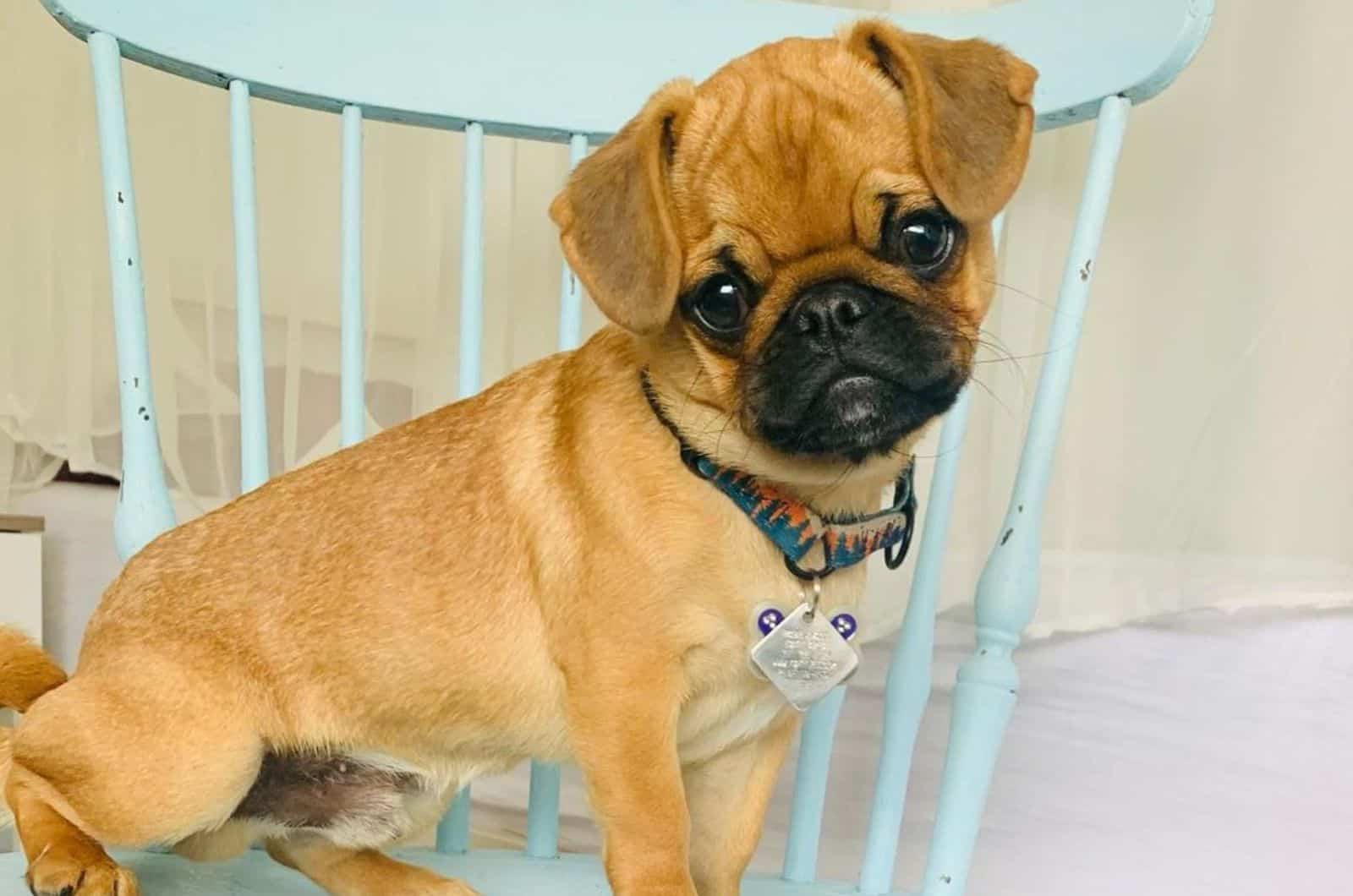Pugs make great family dogs and they come in a few different possible coat colors, one of which is the apricot Pug. They are known for their amusing antics and are characterized as charming, naughty, and lovable.
Apricot pugs, in particular, are extremely rare. In fact, the apricot color is present in only four percent of Pugs and is caused by a recessive gene.
Due to the resemblance in color pattern, apricot dogs are occasionally misidentified and registered as fawns. Most people would probably think that it’s a regular fawn if they were to see an apricot Pug picture.
Everything you need to know about the apricot variant of this breed is included in this article.
What Is An Apricot Pug
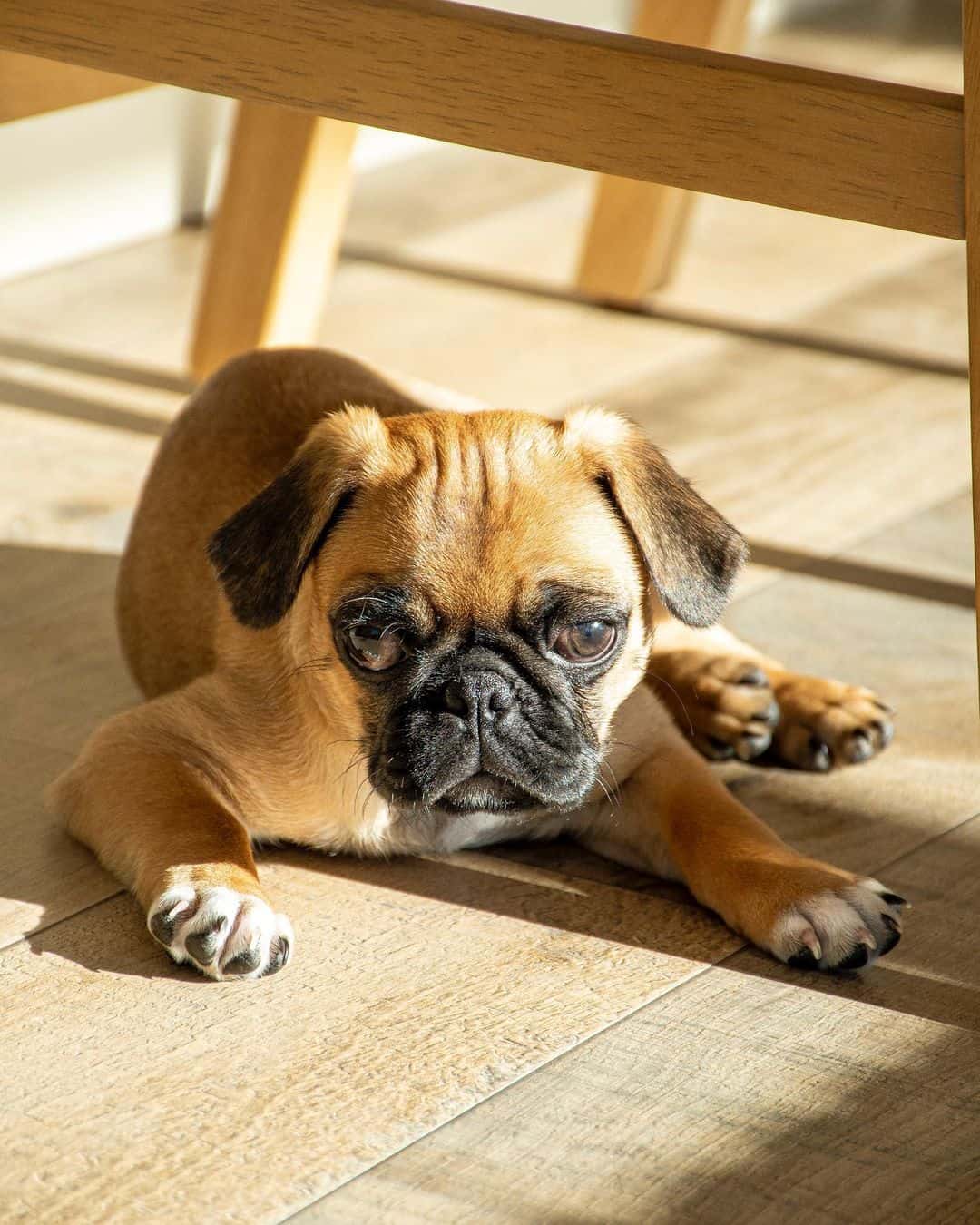
Apricot Pug puppies and fawn Pug puppies may be hard to tell apart as infants. Pug puppies start out darker and get lighter as they get older.
Apricot Pugs can be a bright orange color, a deep shade of apricot, or a paler shade that is more fawn-like.
On the other hand, some apricot Pugs mature with a darker, richer gold hue.
To best understand how this color comes about, it can be a good idea to learn the fundamentals of the genetics at play in order to understand how this hue develops within the breed.
Every dog receives two coat color genes. The instructions for a particular color will typically be found in these genes. Only one of these two genes, though, can actually manifest as the actual coat color.
It all comes down to some fundamental mechanics as to which gene is selected to be expressed.
We will talk about the genetics of different colors in Pugs in more detail later on, but let us first cover the general breed history so that we have some good foundations.
History Of The Pug Breed
It is often believed that the purebred Pug originated in China before moving on to Japan and subsequently Europe.
Some Pekingese dogs were even given titles of status in China, where they were widely venerated in a manner resembling royalty. Many of them had attendants who took care of them and made sure they were as comfortable as possible.
It makes sense that the majority of Pug owners were members of the country’s ruling classes or those in court circles given that the dogs were often seen largely as ornaments.
The Pug was well-known in Asia before making its way to the West, and it appears that Russia was a stop along the way to Europe. And before long, these cute doggies found their way into everyone’s hearts and there were Pug lovers everywhere.
It’s interesting that they have the Latin phrase “multum in parvo,” which roughly translates to “a lot in a little,” linked with them.
Read next: Comeback Of The Retro Pug
Dominant And Recessive Genes In The Apricot Pug
There are two types of genes: dominant and recessive.
Always, a dominant gene will prevail over a recessive gene and determine which one is expressed in the dog. As a result, no dominant genes must be present for a recessive gene to express.
Particularly in apricot Pugs, a recessive gene is responsible for the apricot coloration.
This indicates that two of the genes necessary for the dog to express the apricot coat color are present.
The final hue produced by this recessive gene can, however, vary greatly in shade. Due to the overlap between these colors, it is possible that you will get a color that is considerably closer to fawn.
Select a breeder with parents who are both brightly colored apricot to increase your chances of getting an apricot-hued cute Pug.
Is The Apricot Pug Recognized By Kennel Clubs?
Apricot fawn is one of the several coat hues available for the fawn Pug. According to the American Kennel Club (AKC), apricot Pugs will be categorized under fawn Pugs as there is no special category for them.
There are, however, four distinct colors, according to the Federation Cynologique Internationale (FCI): apricot, fawn, black, and silver Pugs. As you can see, the FCI distinguishes the apricot Pug‘s hue as a separate category.
The Canadian Kennel Club (CKC) recognizes silver fawn, fawn, or black as valid Pug colors. However, the term “fawn” can be used to describe any fawn color, including light or dark apricot fur tones.
There are also some other patterns that are much rarer, such as the merle Pug and the brindle Pug.
Apricot Pug Appearance
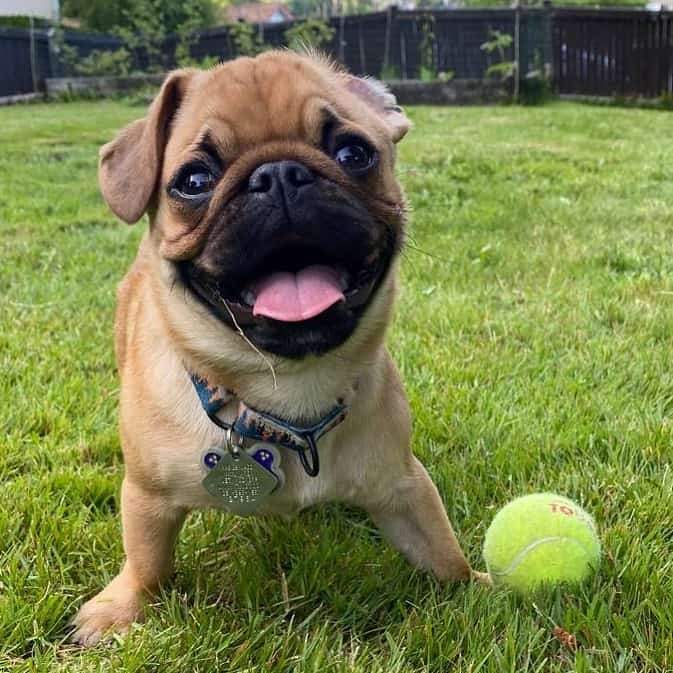
The only physical distinction between the apricot Pug and other hues of Pugs is their coat color.
Their heads have recognizable deep creases, short, flat noses, and recognizable black masks. Their big, commanding eyes, which overwhelm their silly, wrinkled face, reflect a range of emotions, including surprise, grumble, delight, and curiosity.
On their cheeks, they have “beauty spots,” which are actually moles, and on their forehead, they have a clear “thumb mark.”
Furthermore, some non-black Pugs, such as apricot fawns, may have an excess of black hairs on their coat, a trait known as smuttiness.
Apricot Pug Coat
As was already noted, this coat comes in a variety of colors, from fawn to apricot.
Apricot Pug coats can have various tones of color within the same coat and should be close to a light yellow-golden tint. The fawn Pug has a considerably paler color that resembles cream. The shade might differ within the coat itself, just like the apricot.
It’s crucial to be aware that some breeders offer for sale Pugs with coat colors that fall midway between apricot and fawn. They might refer to them as apricot fawn Pugs, though.
A faint black hairline runs down the dog’s spine in both of these colors. This is what we call trace.
Apricot Pug Size
As we previously stated, apricot Pugs look exactly like other members of the breed, even in terms of height and weight.
Despite their tough exteriors, apricot pugs are considered toys. Their height ranges from 10 to 11 inches, and they weigh between 14 and 18 pounds.
They have broad limbs and are sturdy, square-looking dogs.
Apricot Pug Temperament
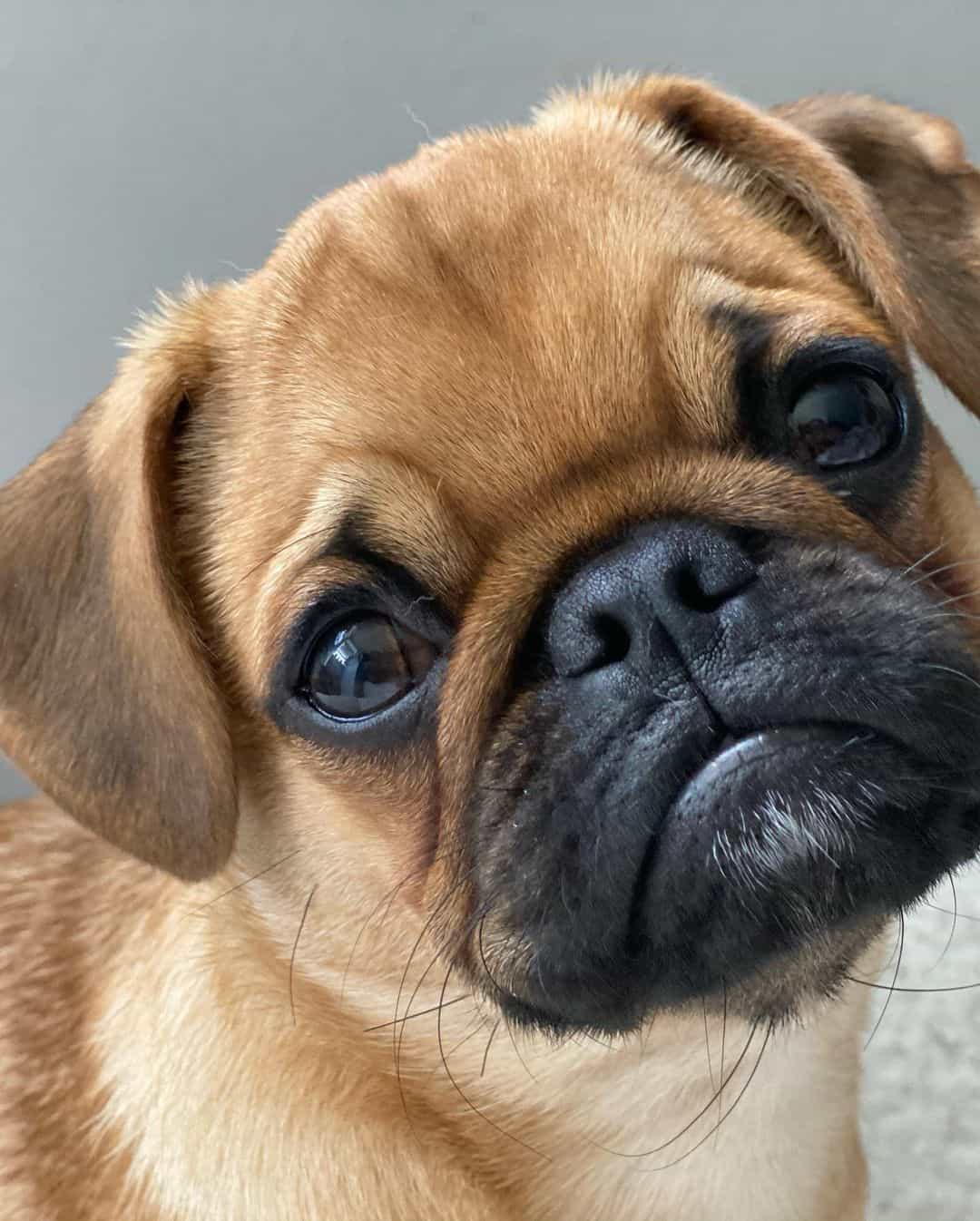
Pugs were created to be companions, and they are excellent family pets.
They enjoy curling up on the couch with you while you watch a movie or read a book because they are normally sedentary pets.
This in no way implies that the Pug doesn’t like being active and even goofy at times. Instead, they can be comical, animated dogs who like socializing and amusing their owners with silly behaviors.
Temperament is influenced by a variety of factors, including upbringing, socialization, and heredity. Apricot Pug puppies are typically dogs with positive attitudes and are friendly, engaging, and eager to cuddle.
Socialization is crucial for ensuring that your apricot Pug puppy grows up from a shy baby animal to a well-rounded adult canine.
Are Apricot Pugs Good For Families With Kids?
Children love apricot Pugs because they are playful and adaptable to practically any living circumstance.
These courageous and sturdy tiny dogs make wonderful family pets and are a good choice for families with younger children due to their small size.
To ensure everyone’s safety and pleasure, apricot Pugs should, like any breed, constantly be supervised while around kids.
Are Apricot Pugs Aggressive?
Pugs are not regarded as an aggressive breed and are typically lively and adaptable.
However, like other small breeds, apricot Pugs can be easily startled. If your dog feels threatened or anxious, aggressive tendencies like barking and biting may manifest.
A dog with high socialization skills will be assured, amiable, and less likely to exhibit unwelcome aggressiveness when out and about.
Apricot Pug Training
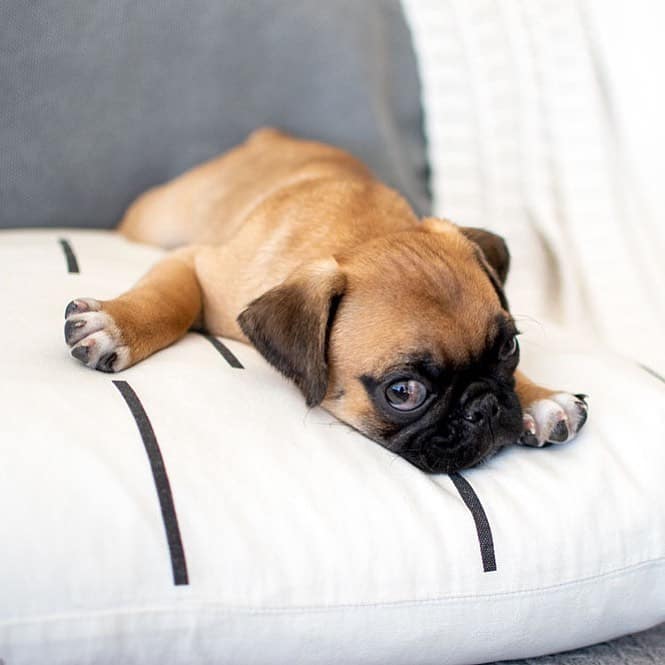
The intelligence and obedience of Apricot Pugs are astounding. They do, however, show a small amount of stubbornness, which may be overcome with sufficient training.
They often rebel and turn against you since they are sensitive and soft-hearted and do not react well to strictness and severe penalties.
So, in order to train your Pug, positive reinforcement and admiration are required.
Pugs are generally good socializers and friendly toward everyone. Even then, you’ll need to socialize and train your Pug to act appropriately in particular settings.
Apricot Pug Exercise
The energy level of apricot, fawn, and black Pugs is the same. Pugs enjoy cuddling up next to you on the couch. Although they are not a breed with a lot of energy, they are fun and vivacious and would enjoy going on an adventure with you.
Dogs with brachycephalic faces, such as the French Bulldogs, Boston Terriers, and Pugs, are less tolerant of hot weather. Make sure they take frequent pauses, drink lots of water, and refrain from strenuous exercise on hot summer days.
You should avoid the heat of the day by taking your apricot Pug for a walk in the early morning or late evening. Pugs benefit from regular exercise and would love to take daily walks for at least 30 minutes.
Apricot Pug Grooming
For grooming, pugs are a low-maintenance breed. Everything you need to take care of your Pug can be done at home.
Regardless of coat color, Pugs shed a lot, so you’ll undoubtedly find hair on your clothes and in your home.
Regular brushing will prevent tangles, control shedding, and maintain the health of your Pug’s coat.
Keep the condition of your Pug’s coat by bathing them no more frequently than once a month. Pugs don’t require a lot of bathing. You can wash them in your sink or tub if they are filthy after a walk or have found something disgusting to roll in. Their quick-drying short hair will help.
Weekly nail trimming maintains the health of their joints and paws. Walking can be painful and difficult when they have long nails. Your Pug can accept nail trimming calmly with some practice.
To keep your Pug healthy, give its wrinkles and nostrils a periodic cleaning. You might need to clean inside the creases on your Pug’s face depending on how deep they are if you want to maintain healthy, dry skin. To avoid accumulation, wipe in between wrinkles and the nostrils.
Apricot Pug Health
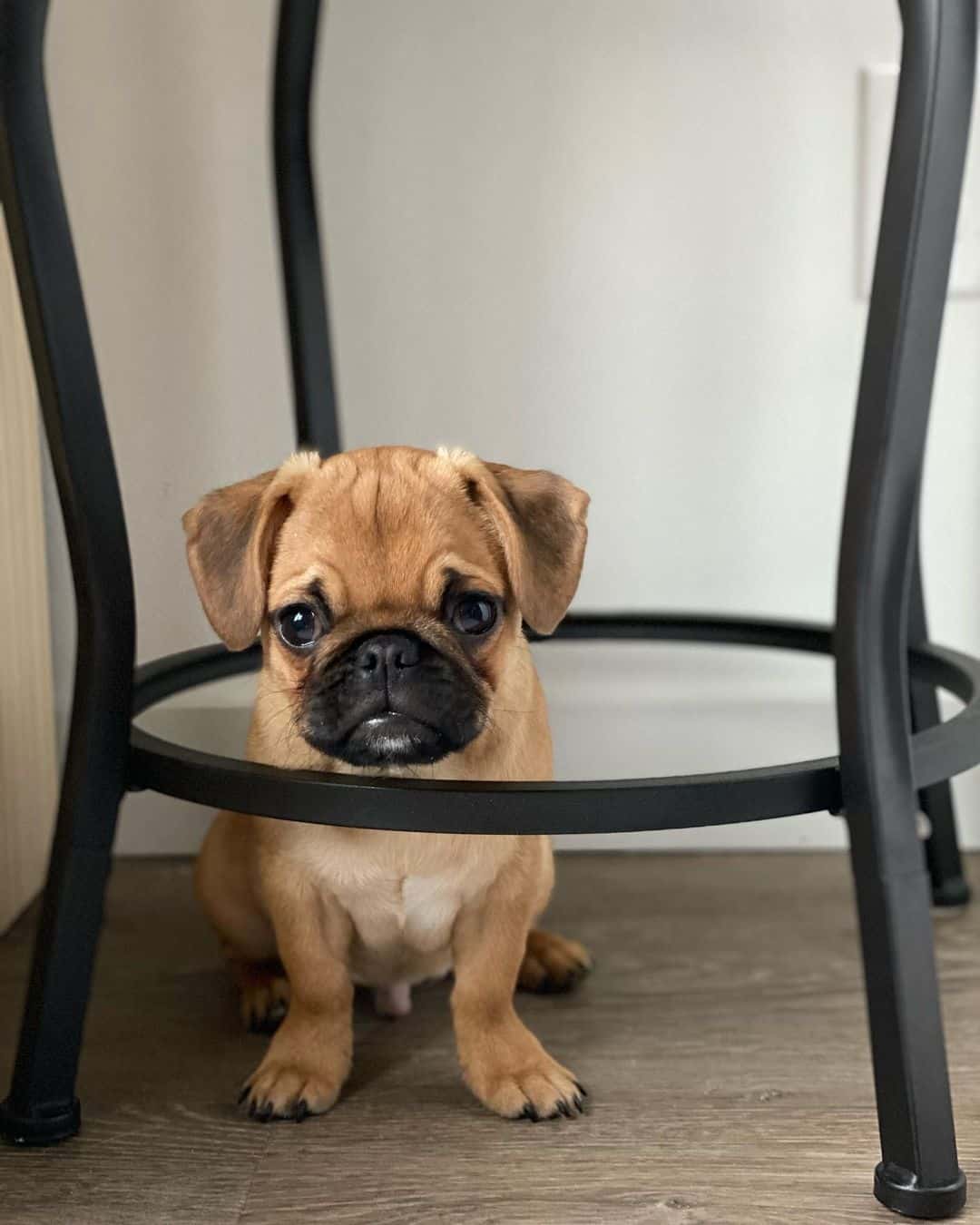
Pugs aren’t exactly among the healthiest dog breeds, as you may already know.
They are predisposed to a variety of different medical disorders, some of which are more dangerous than others, because of their particular physiology, brachycephalic head shape, and genetics.
Having said that, apricot Pugs can still live a happy and healthy life if you keep a close eye on them and take them to the vet for regular health testing.
Most of the time, keeping your Pug healthy means spotting problems early and treating them before they worsen.
Common Health Issues In Apricot Pugs
Like all breeds, apricot fawn Pugs can develop health problems. Even though not all apricot fawn Pugs will develop one or more of these diseases, it’s still important to be aware of them if you’re considering getting one.
The health issues listed below can also affect apricot Pugs as well as the Pug breed as a whole.
Eye Ulcers
Due to their size and prominence, the Pug’s eyes are prone to damage and corneal ulcers.
If your Pug squints or if its eyes are unusually bloodshot and crying, call your veterinarian straight away. Corneal ulcers normally get better with treatment, but left unattended, they can rupture the eye or possibly cause blindness.
Dry Eye
Pugs are susceptible to keratoconjunctivitis sicca and pigmentary keratitis. They could occur simultaneously or one at a time.
Dry eye happens when the eyes don’t produce enough tears to stay moist. If this is the problem, your veterinarian can do tests to see whether medication and additional care can be used to treat it.
Pigmentary keratitis is characterized by black spots on the cornea, particularly in the vicinity of the nose. If the pigment completely covers the eye, blindness may occur.
Your veterinarian may advise you to take medication that will help keep the pigment out of your apricot fawn Pug’s eyes while also keeping them moist. Both of these eye conditions require constant care and treatment.
Pug Dog Encephalitis
Pug Dog Encephalitis, also known as PDE, a deadly inflammatory brain disorder, only strikes Pugs.
The cause of this illness in Pugs is unknown, and there is no way to diagnose or treat it. Tests on the dog’s brain tissue can only be done after it has passed away to determine whether PDE was present.
PDE typically affects young pups, who may experience seizures, circles, blindness, coma, and even death.
Hip Dysplasia
This illness affects both small and large breeds, including Pugs.
This deformity of the hip joint is thought to be caused by a number of elements, including genetics, environment, and diet.
Affected Pugs often lead normal, healthy lives when given the proper veterinary treatment.
Apricot Pug Lifespan
The lifespan of an apricot Pug is the same as that of any other Pug, as the color of the coat has no bearing on either longevity or health.
A Pug can live for 12 to 15 years on average. While some Pugs can live up to 20 years, due to their predisposition to gain weight quickly and general respiratory issues, most of them do not survive past the age of 15.
Apricot Pug Price
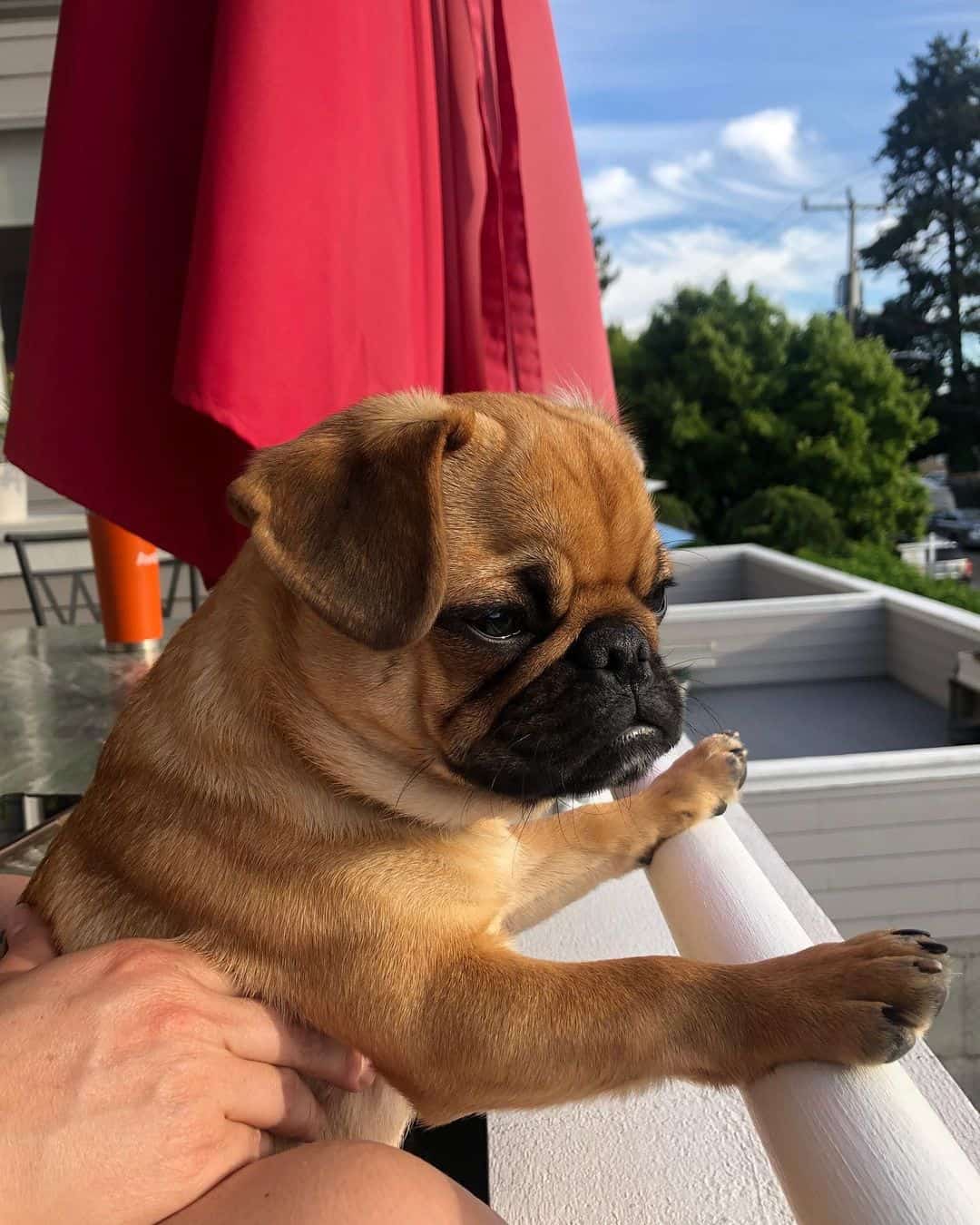
Given that fawn is one of the breed standard colors, fawn Pugs are priced similarly to other Pugs. Fawn Pugs normally cost between $600 and $1500, although prices can range as high as $6,000 or more, depending on the lineage and breeding rights.
However, apricot Pugs may fetch a greater price than typical since they are regarded as exceptional by some individuals.
Any puppy’s price is influenced by a variety of factors, so it’s crucial that you do your homework and only purchase an apricot Pug puppy from a reputable breeder.
Conclusion
Apricot fawn is one of the several coat hues available for the fawn Pug. According to the American Kennel Club, apricot Pugs are not given their own category; instead, they are grouped with fawn Pugs.
We hope this article has provided some clarification on this cute little Pug variant.
We tried to cover all the characteristics of the apricot Pug that set them apart from other Pugs as well as those that demonstrate how similar they are.
Overall, if you decide to adopt one, it’s a very interesting pooch that will undoubtedly capture the heart of any dog lover. If you do, make sure to thoroughly investigate every Pug breeder you have access to and choose the best one.Good luck with your new best friend!
